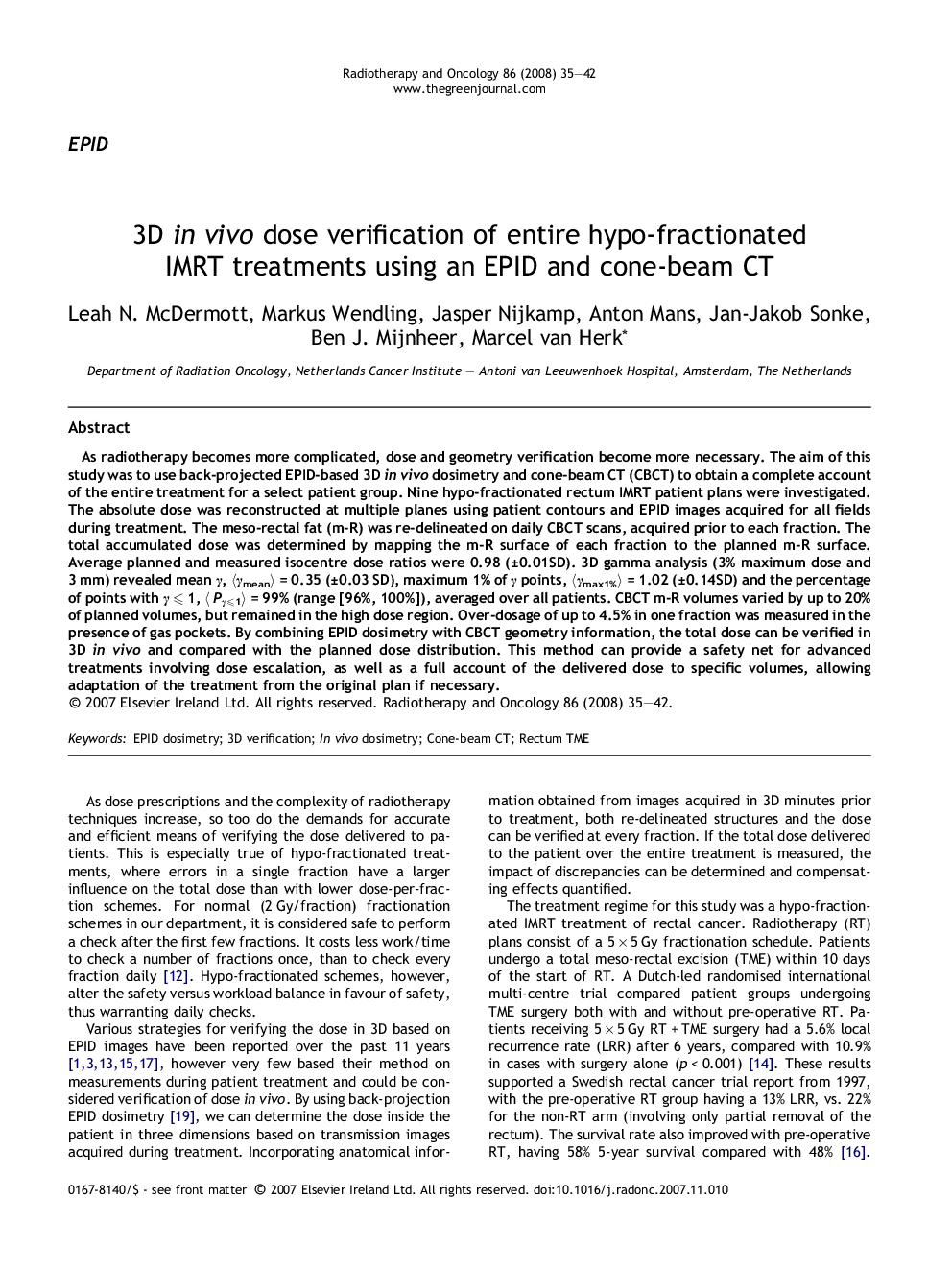| Article ID | Journal | Published Year | Pages | File Type |
|---|---|---|---|---|
| 2160547 | Radiotherapy and Oncology | 2008 | 8 Pages |
As radiotherapy becomes more complicated, dose and geometry verification become more necessary. The aim of this study was to use back-projected EPID-based 3D in vivo dosimetry and cone-beam CT (CBCT) to obtain a complete account of the entire treatment for a select patient group. Nine hypo-fractionated rectum IMRT patient plans were investigated. The absolute dose was reconstructed at multiple planes using patient contours and EPID images acquired for all fields during treatment. The meso-rectal fat (m-R) was re-delineated on daily CBCT scans, acquired prior to each fraction. The total accumulated dose was determined by mapping the m-R surface of each fraction to the planned m-R surface. Average planned and measured isocentre dose ratios were 0.98 (±0.01SD). 3D gamma analysis (3% maximum dose and 3 mm) revealed mean γ, 〈γmean〉 = 0.35 (±0.03 SD), maximum 1% of γ points, 〈γmax1%〉 = 1.02 (±0.14SD) and the percentage of points with γ ⩽ 1, 〈 Pγ⩽1〉 = 99% (range [96%, 100%]), averaged over all patients. CBCT m-R volumes varied by up to 20% of planned volumes, but remained in the high dose region. Over-dosage of up to 4.5% in one fraction was measured in the presence of gas pockets. By combining EPID dosimetry with CBCT geometry information, the total dose can be verified in 3D in vivo and compared with the planned dose distribution. This method can provide a safety net for advanced treatments involving dose escalation, as well as a full account of the delivered dose to specific volumes, allowing adaptation of the treatment from the original plan if necessary.
